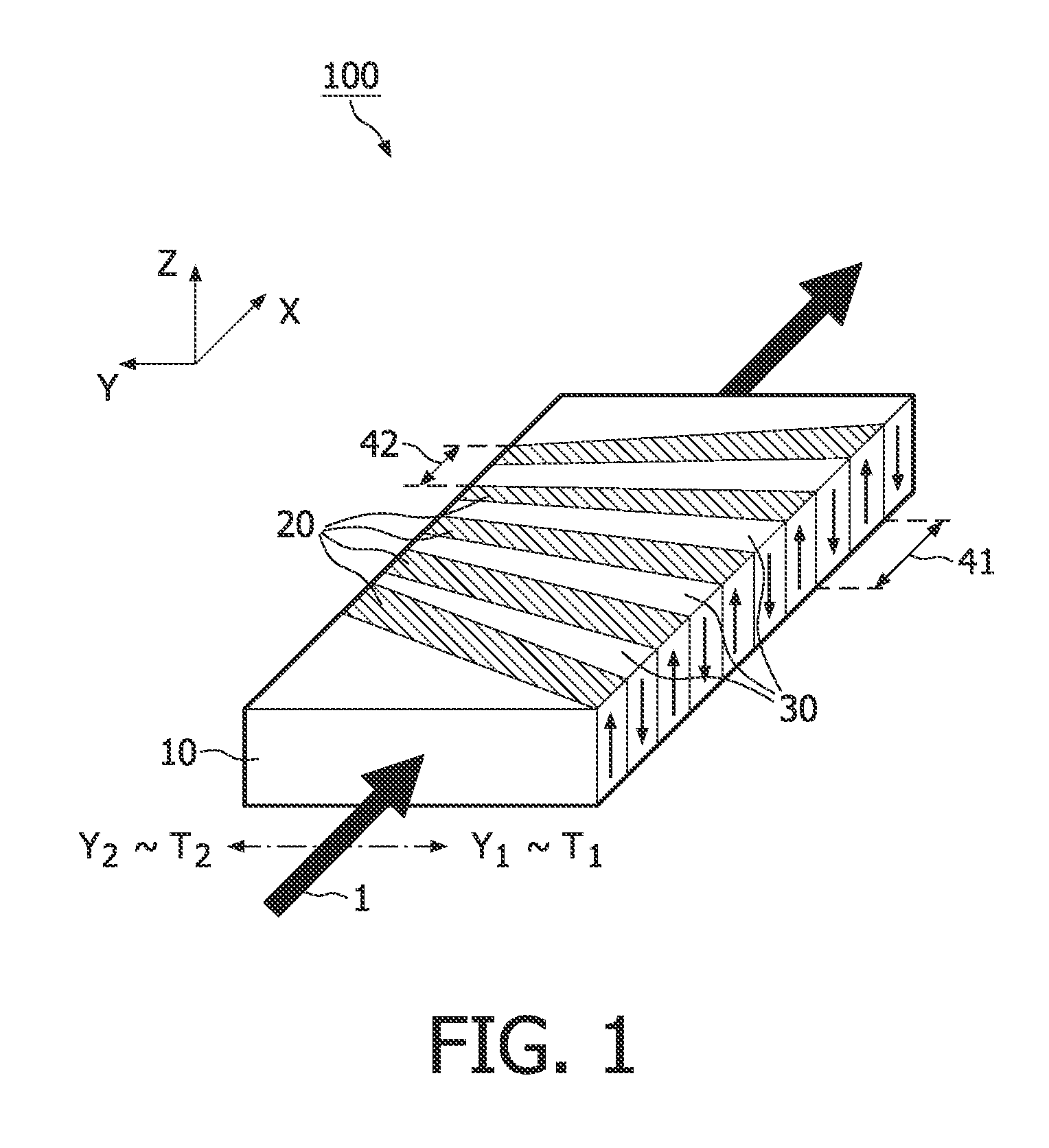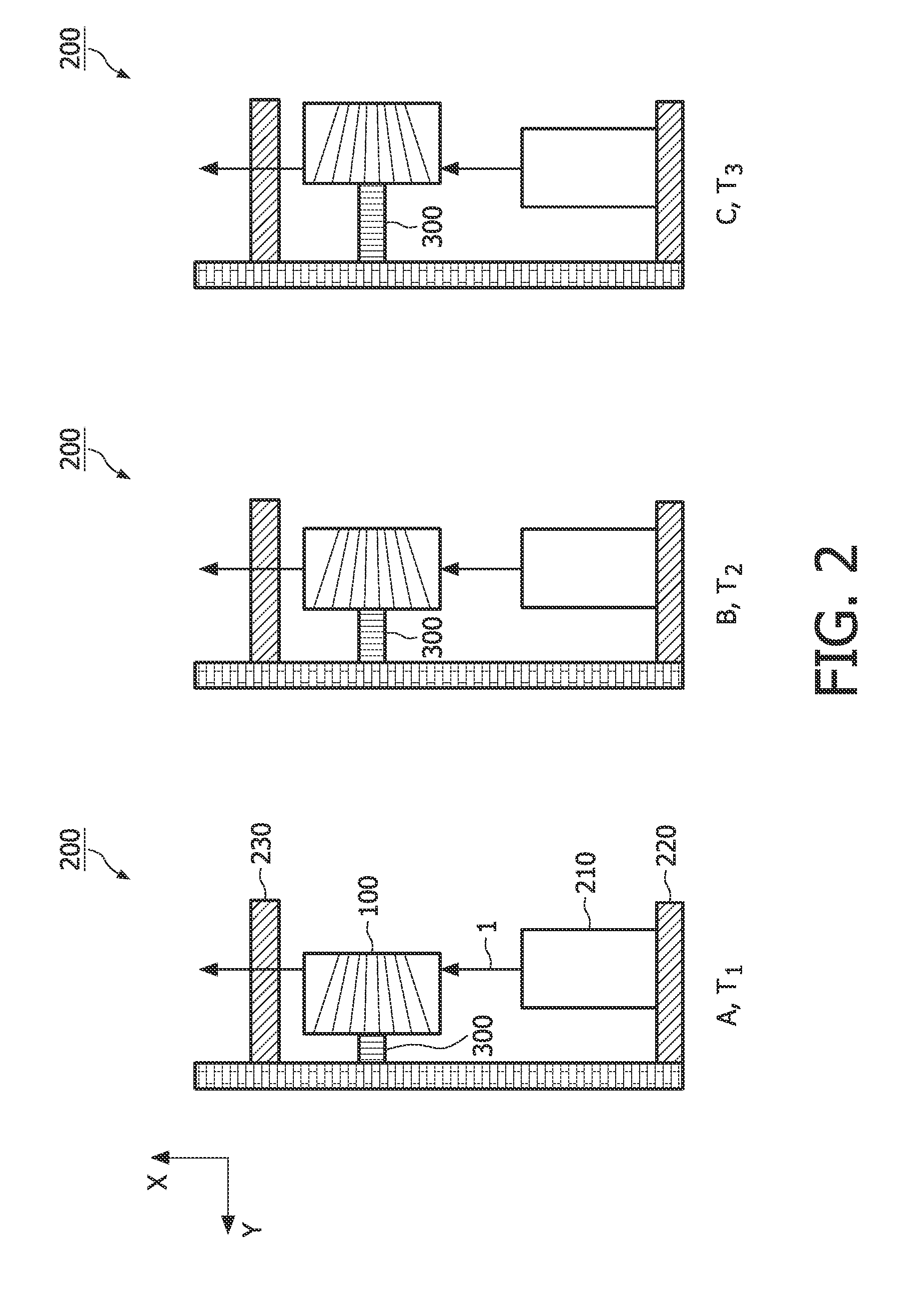Wavelength converting device, laser, and method to stabilize the wavelength conversion efficiency
a wavelength conversion and wavelength technology, applied in the field of wavelength conversion devices, can solve the problems of destructive interference, temperature sensitivity of non-linear optical materials, clear limitation, and considerable decrease in conversion efficiency, and achieve the effect of maximizing the conversion efficiency and stabilizing the conversion efficiency of the wavelength conversion devi
- Summary
- Abstract
- Description
- Claims
- Application Information
AI Technical Summary
Benefits of technology
Problems solved by technology
Method used
Image
Examples
Embodiment Construction
[0020]Second order nonlinear effects are usually relatively weak, yet it is possible to use them to generate frequency conversion processes at power levels suitable for practical applications. In sum and difference frequency mixing (SFM, DFM), two input photons, that travel through a nonlinear medium, are added or subtracted into one photon of higher or lower energy: ω3=ω1±ω2. When ω1=ω2=ω then ω3=2ω, the nonlinear susceptibility gives rise to second harmonic generation (SHG). Other types of nonlinear processes, down-conversion or optical parametric generation (OPG), start with one input photon and result in two photons of lower energies. The two generated wavelengths are referred to as signal and idler, of which the signal is the shortest one. When a cavity is used to enhance the efficiency by resonating one or both of the generated fields, the device is called an optical parametric oscillator (OPO).
[0021]In three-wave nonlinear processes, maximum output power levels are obtained w...
PUM
| Property | Measurement | Unit |
|---|---|---|
| thermal expansion | aaaaa | aaaaa |
| temperature | aaaaa | aaaaa |
| length | aaaaa | aaaaa |
Abstract
Description
Claims
Application Information
 Login to View More
Login to View More - R&D
- Intellectual Property
- Life Sciences
- Materials
- Tech Scout
- Unparalleled Data Quality
- Higher Quality Content
- 60% Fewer Hallucinations
Browse by: Latest US Patents, China's latest patents, Technical Efficacy Thesaurus, Application Domain, Technology Topic, Popular Technical Reports.
© 2025 PatSnap. All rights reserved.Legal|Privacy policy|Modern Slavery Act Transparency Statement|Sitemap|About US| Contact US: help@patsnap.com



